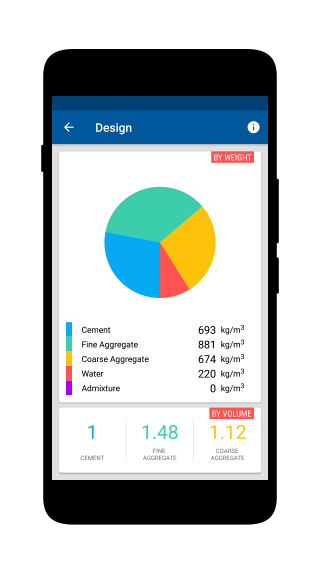“Special concrete for special construction projects.” This statement is valid due to its unique property and benefits over usual mix. Special concrete refers to mix that has unique properties that are not found in conventional form.
By using special concrete, engineers can design structures that are better to resist harsh conditions, and heavy loads. Overall, using this is a wise choice for engineers looking to achieve optimal performance and safety. Its use has become very common in modern construction projects.
This means buildings and structures made with special concrete can take more stress and last longer. It can also make construction easier and quicker because it flows better and doesn’t need as much vibration. This can result in safer and more reliable structures, making it a good choice for important building projects.
Tall building such as the Burj Khalifa, is of high performance concrete. The concrete used in this building is designed to raise the high load and harsh weather conditions experienced at such a great height. High-performance concrete provides the necessary strength to support the weight of the building. Some of the different types are as follows:
Polymer-concrete composites
A monomer is an organic molecule that is capable of combining chemically with similar or different molecules to form a high molecular – weight material, known as a polymer. A polymer consist of numerous monomers which link together in a chain – like structure. It acts as a coupling agent and the bond between polymer and aggregate. Therefore, we can improve the strength of the composite.
There are three types of polymer – concrete composites, they are :
- Polymer impregnated concrete (PIC): In PIC, mix is impregnated with a liquid polymer which is usually epoxy. And it goes into the pores of the mix and hardens to form a solid matrix. This improves strength, durability, and chemical resistance.
- Polymer modified concrete (PMC): In PMC, the binder used in mix is partially replaced with a polymer, such as latex or a polymer emulsion. This improves the workability and improves the properties of the mix, such as its strength, elasticity, and durability.
- Polymer portland cement concrete (PPCC): It contains a mixture of concrete, and a polymer material. The addition of the polymer material provides improved properties, such as improved tensile strength, flexibility, and durability, compared to traditional mix.
Sulphur- concrete composites
In this type of mix, we have to add sulphur, FA and CA, but contains no water or cement. In this type of mix, we have to maintain a high temperature (140 o C) during mixing, this ingredients form a uniform mix which can be cast into moulds. The mix proportion for optimum strength and workability are typically obtained using 32 % sulphur, 48 % CA and 5 % silica flour. This attains strength very rapidly.
Fibre reinforced special concrete
In cases where we require high tensile strength mix, we tend to add fibre in the cement based matrix. It also delays the crack formation and thus helps in rising the toughness. The quantity of fibre used should be less than 5 % to give the best result.
Ferrocement
This is also a type of R.C.C. In this type of mix closely spaced, multiple layers of mesh or fine rods are used as reinforcement. In structures where there is a limitation of thickness and situation when we don’t recommend using a reinforcing bar as it will occupy more space.
Very high strength special concrete
Present scenario demands for high strength mix (upto 100 MPa). We can consider high strength mix from 60 MPa – 100 MPa. Advantages of using a high strength mix is that lesser size sections can be used and thus can be ecnomical. We can introduce admixtures so as to increase the strength of mix.
Light weight Concrete
We make light weight concrete by using light weight aggregates, such as pumice, perlite, to produce a lower – density concrete. We use this where weight reduction is important, such as in the construction of high rise buildings or bridges.
Self-Consolidating Concrete
It is a type of concrete that has a high level of fluidity and can fill complex shapes and tight spaces without the need for vibration. This makes it ideal for use in situations where there is limited access.
Decorative Concrete
Decorative concrete is a type of concrete, which we design to have an attractive appearance, often through the use of pigments, aggregates, or other attractive elements. We use this type of mix in landscaping, flooring, and other applications where appearance is important.
Fire Resistant Concrete
Fire resistant concrete is a type of mix, which we design to resist high temperatures and resist fire damage. We use this type of mix in places where fire safety is important, such as in buildings, tunnels, and bridges.
Recycled Concrete
It is made by using recycled materials, such as crushed concrete, instead of natural aggregates. This type of mix is used in sustainable construction practices and helps to save natural resources and reduce waste.
Also check these post for step by step procedure of CMD - M10M20 M25 M30 M40 M50.
Conclusions
Special concretes are an essential aspect of modern construction. These materials offer unique properties that can be used to meet the specific needs of each construction project. Each of these special types of mix can bring specific benefits to a construction project, and it’s important to choose the right type based on the project conditions and need.
Some of the key learnings are as follows:
- Applicability: It is best for high strength to light weight concrete structures. Special concrete plays a crucial role in safety, durability, and fit for purpose.
- Types of special concrete: Some of the most common special mixes used in construction are explained.
- Benefits of using special mix: We use this in construction and it provides many benefits. Including strength and durability, more resistance to environmental factors, and reduced weight and cost.
Concrete Mix Design
- Calculate cement, sand and aggregate quantity in concrete.
- Calculate the number of premix bags required for your project.
- Option to set your own size and rate of premix bags.
- Calculate the volume of concrete required for slabs, walls, footings and columns.
- Calculate the weight of ingredients required for preparing the calculated volume of concrete.

This article was crafted by a group of experts at eigenplus to ensure it adheres to our strict quality standards. The individuals who contributed to this article are:
Author


